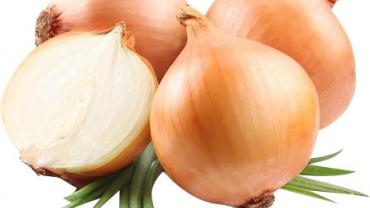
It’s difficult to imagine good cuisine without onions. There’s French onion soup onions grilled with meat on skewers for shish-ke-babs the classic mirepoix as the aromatic base for hundreds of dishes and an endless array of other applications for the myriad varieties of onions that are cultivated or grow in the wild. Owing to the worldwide popularity of onions annual cultivation exceeds 44 million tons and onions are the second most important horticultural crop after tomatoes.
While onions are known for causing bad breath and making people cry in the kitchen home remedies and “old wives’ tales” call for slipping a cut onion into a sock and wearing it on the foot to ward off colds and other illnesses. This method is unlikely to yield significant results but consuming onions may have dramatic benefits for health.
In terms of nutrition onions aren’t exactly loaded with vitamins and minerals. They’re a good source of vitamin C and they have small amounts of B6 and manganese. Beyond that they don’t boast much with regard to required nutrients. For other helpful compounds though onions are rock stars. As members of the Allium genus—a category that also includes garlic chives leeks scallions and shallots—onions are rich in sulfur and this sulfur may be responsible for many of onions’ health-promoting properties not unlike the sulfur-containing compounds in cruciferous vegetables. (Some researchers call the stinging and bitter flavors alliums present “chemical weapons.”)
Different types of onions contain different phytochemicals. For example red onions contain anthocyanins the compound responsible for their red/purple pigment (as well as that of blackberries raspberries and other similarly colored produce). Red onions are also a rich source of quercetin which may have beneficial effects for cardiovascular health and chemoprevention. Yellow and white onions also contain quercetin though typically in lower amounts depending on the cultivar. All onions have a significant amount of flavonols but these are more highly concentrated in red onions than in yellow. Per kilogram of fresh weight red onions contain 415-1917mg of flavonols compared to 270-1187mg in yellow onions. Fortunately these helpful compounds and flavonoids are heat-stable and their antioxidant properties are not lost during digestion. (Good to know for people who prefer not to eat raw onions!)
Onions have been studied extensively regarding their potentially chemoprotective compounds. As mentioned earlier onions’ anti-cancer potential stems from their sulfur and also selenium content. Growth conditions may influence the amount of these elements in onions however. Onions are known to accumulate selenium but this requires of course that the soil is rich in selenium to begin with. Selenium-enriched onions may have stronger effects against cancer than the common plants owing to higher amounts of Se-methyl selenocysteine and gamma-glutamyl-Se-methyl selenocysteine. High-selenium onions (as well as garlic and broccoli) influence cell growth inhibition cell cycle arrest induction of apoptosis and inhibition of histone deacetylase (HDAC) all of which may be helpful in the fight against cancer.
Compounds in onions also influence eicosanoid synthesis which underlies their antithrombotic hypolipidemic and anti-arthritic properties. As if all that weren’t enough onions may also be beneficial for reducing postprandial blood glucose spikes in those with type-2 diabetes. Compounds in onions inhibit α-glucosidase and other carbohydrate-digesting enzymes in the small intestine. Diets high in onions may help reduce post-meal blood sugar surges but this may not result in any improvement to fasting levels. Research indicates that onion extracts help to normalize the activity of liver hexokinase and glucose 6-phosphatase enzymes that influence blood glucose levels. Onions may also exert an inhibitory effect on HMG CoA reductase thereby reducing total and LDL cholesterol. Owing to their antioxidant properties onions may also help to reduce lipid peroxidation and overall oxidative stress.
Whether they’re grilled and served on top of a burger or served raw in garden-fresh salsa eating something healthful never tasted so good!